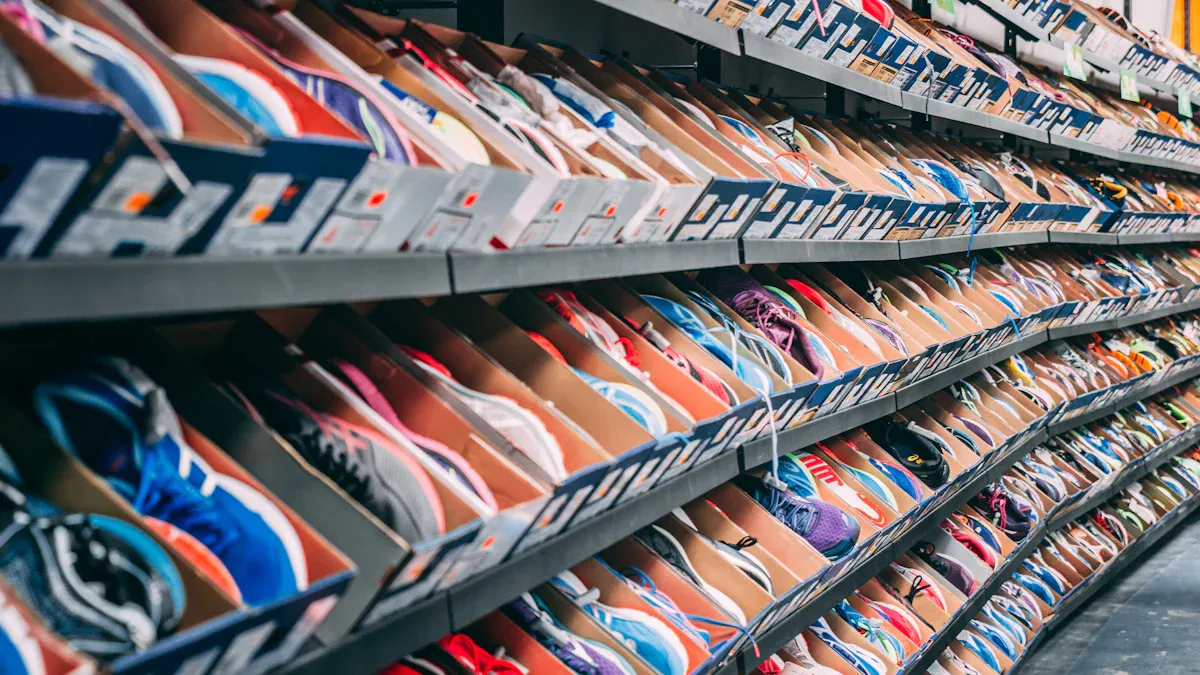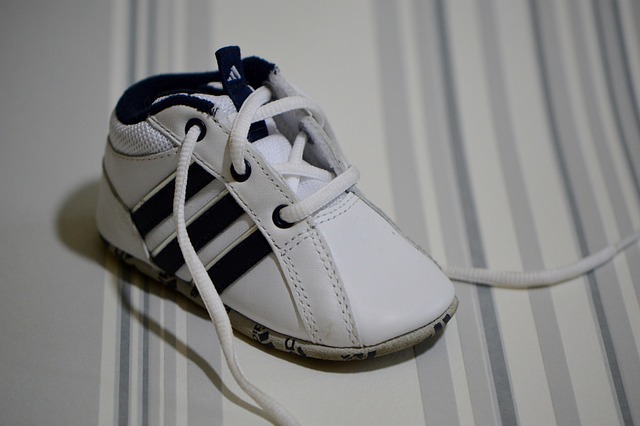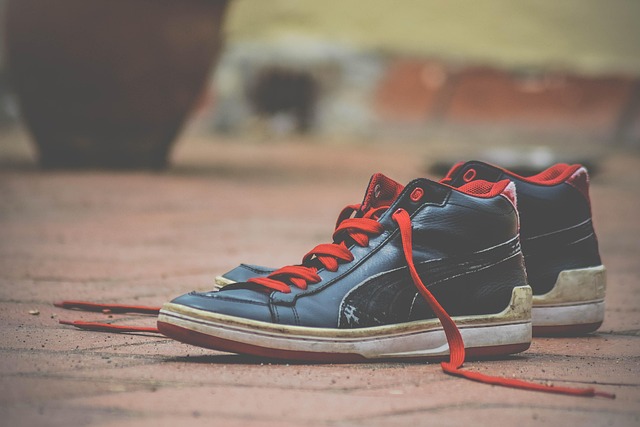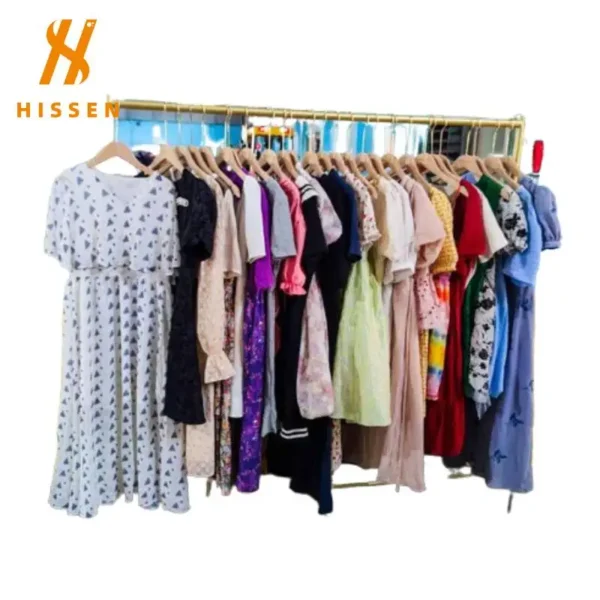The market for used branded shoes represents a significant opportunity for B2B buyers operating within the circular fashion economy. Establishing a reliable supply chain for these products requires sophisticated understanding of market dynamics and strategic sourcing methodologies. This sector has evolved from informal networks to a structured ecosystem, yet maintaining consistent product flow and quality remains challenging. For wholesale distributors, retailers, and other commercial buyers, developing a robust procurement framework is essential for business continuity and market competitiveness. This analysis examines the current landscape, identifies primary acquisition channels, and outlines strategies for inventory stabilization within the used branded shoes sector. This Guide Will Cover Key Points: Second Hand Branded Shoes Wholesale: A Profit Model Analysis. The following sections will explore the operational frameworks that underpin a profitable wholesale business model in this sector.
I. Current Market Dynamics and Operational Challenges
The secondary market for footwear has matured into a sophisticated segment of the global fashion industry, characterized by complex logistics and evolving market patterns. For B2B enterprises specializing in used branded shoes, navigating this landscape requires addressing several fundamental challenges that impact supply chain stability and product quality.
Fragmented Sourcing Networks and Supply Volatility
The procurement environment for used branded shoes operates through decentralized and varied input channels. Unlike manufacturing new products, where production schedules and outputs are controlled, the supply of pre-owned footwear depends on numerous independent sources including individual consumers, donation centers, and collection programs. This fragmentation creates substantial inconsistency in both volume and quality of available inventory. Commercial buyers often experience unpredictable fluctuations in available stock, making forward planning and inventory management particularly challenging. The irregular nature of supply arrivals can lead to either shortages or overwhelming surpluses that require rapid processing and distribution.
Quality Assurance and Authentication Complexities
Maintaining consistent product standards represents another significant hurdle for businesses operating in this sector. Each individual pair of used branded shoes arrives with unique wear patterns, conditioning needs, and potential authenticity concerns. The absence of uniform quality standards across the industry necessitates implementing rigorous internal verification processes. Authentication expertise becomes particularly valuable when handling premium products, where counterfeit detection requires specialized knowledge and continuous training. Developing systematic grading criteria that account for sole wear, upper materials condition, structural integrity, and overall cleanliness is essential for maintaining product consistency and customer trust.
Logistics and Operational Infrastructure Demands
The physical handling of used branded shoes introduces distinct logistical challenges not present in new product distribution. Reverse logistics capabilities must accommodate intake from multiple sources, often in varying quantities and conditions. The process typically requires centralized consolidation facilities where inventory can be sorted, evaluated, cleaned, and prepared for resale. Each handling stage adds operational complexity and cost considerations. Transportation economics must account for the irregular nature of shipments and the need for specialized cleaning or restoration processes before products can enter the commercial distribution channel.
Market Demand Fluctuations and Pricing Variables
The commercial viability of used branded shoes inventory is subject to rapid shifts in consumer preferences and market trends. Specific styles and models may experience sudden surges or declines in demand based on cultural influences, seasonal factors, or fashion cycles. This volatility creates pricing challenges for B2B buyers who must balance acquisition costs against potential market values. The lack of standardized pricing frameworks requires continuous market monitoring and adaptive procurement strategies to avoid inventory obsolescence or margin compression. Understanding these demand patterns becomes crucial for maintaining profitable operations in the secondary footwear market.

II. Primary Sourcing Channels for Commercial-Grade Pre-Owned Footwear
Developing a diversified sourcing strategy is essential for securing consistent inventory of quality used branded shoes. B2B operations typically leverage multiple procurement channels to mitigate supply risks and ensure product variety. Each channel offers distinct advantages and presents unique operational considerations for commercial buyers.
Institutional Partnerships with Charitable Organizations
Formal collaborations with charitable institutions and non-profit organizations represent a significant sourcing avenue for used branded shoes. These entities typically receive substantial donations of footwear through public donation drives, retail collection programs, and community initiatives. Establishing structured partnerships with these organizations can provide consistent volume flows, though product quality may vary considerably. Such arrangements often involve negotiated pricing structures based on bulk acquisitions, with terms covering regular collection schedules, quality expectations, and volume commitments. These partnerships require formal agreements that address sorting protocols, transfer arrangements, and compliance considerations.
Specialized Recycling and Collection Enterprises
Professional recycling organizations have developed sophisticated systems for aggregating pre-owned textiles and footwear on commercial scales. These entities typically operate extensive collection networks spanning multiple regions or countries, providing substantial volume capacity for B2B buyers. Partnerships with these specialized suppliers often involve container-level quantities of used branded shoes, with products pre-sorted according to basic categories or quality tiers. While this channel offers volume efficiency, it may involve limited selection control and typically requires significant initial investment in inventory acquisition. The scale of these operations makes them suitable for buyers with established distribution channels and processing capabilities.
Digital Marketplaces and Online Reseller Platforms
E-commerce platforms dedicated to secondary fashion goods have emerged as valuable sourcing channels for targeted inventory acquisition. These digital marketplaces host numerous individual sellers and professional vendors offering specific styles, sizes, and conditions of used branded shoes. This channel enables more selective purchasing based on current market demands and inventory needs. However, it requires more intensive management to coordinate multiple transactions, quality verification, and consolidation of shipments. The platform-based nature of these acquisitions provides valuable data on market pricing trends and consumer preferences, informing broader procurement strategies.
Consumer Direct and Take-Back Initiatives
Forward-thinking B2B buyers are increasingly developing direct consumer engagement programs to source quality inventory. These initiatives typically involve establishing branded collection systems where consumers can directly submit their pre-owned footwear for credit, compensation, or recycling purposes. While requiring significant investment in program management and consumer marketing, these direct channels often yield higher-quality products with better condition consistency. The controlled nature of these intake systems allows for implementing specific quality guidelines and collection parameters. Developing this direct sourcing capability represents a strategic advantage in securing premium-grade used branded shoes with documented provenance and condition history.

III. Strategic Framework for Inventory Stability and Supply Continuity
Ensuring consistent product availability requires moving beyond transactional purchasing to develop structured supply management systems. For B2B operations focused on used branded shoes, implementing comprehensive inventory stabilization strategies is essential for business predictability and customer satisfaction.
Developing Strategic Supplier Relationships
Transitioning from spot purchasing to relationship-based procurement represents a fundamental step toward supply stability. Cultivating long-term partnerships with key suppliers ensures priority access to quality inventory and creates mutual investment in supply chain success. These relationships typically involve negotiated terms covering volume commitments, quality standards, pricing structures, and exclusivity arrangements. Regular communication and performance reviews help align expectations and address operational challenges collaboratively. Such partnerships may include first-review privileges for new inventory arrivals, allowing selective acquisition of premium products before general market availability.
Implementing Standardized Quality Grading Protocols
Establishing consistent product evaluation standards is crucial for managing inventory quality and valuation. A comprehensive grading system for used branded shoes should address multiple condition aspects including exterior wear, interior condition, sole integrity, material quality, and accessory completeness. Each grade level should correspond to specific quality benchmarks and pricing tiers, enabling accurate cost assessment and inventory management. Training dedicated quality assessment teams ensures consistent application of grading standards across all inventory intake. Documenting condition through standardized photography and description templates further enhances inventory management and sales processes.
Advanced Demand Forecasting and Inventory Planning
Sophisticated inventory management requires implementing data-driven forecasting systems that analyze sales patterns, seasonal trends, and market developments. By tracking movement rates for specific categories, sizes, and styles of used branded shoes, buyers can develop predictive models to guide procurement activities. These analytical capabilities enable proactive inventory replenishment based on anticipated demand rather than reactive purchasing. Integration between sales data and procurement systems allows for automated reordering triggers and inventory level optimization. Advanced planning helps balance inventory across categories and prevents capital concentration in slow-moving products.
Technology Integration for Supply Chain Visibility
Modern inventory management systems provide critical visibility into supply chain operations and inventory status. Implementing specialized software solutions for used branded shoes management enables real-time tracking of inventory levels, turnover rates, and product movement throughout the supply chain. These systems typically incorporate barcode or RFID tracking for individual items or batches, providing detailed visibility into inventory location and status. Integration with supplier systems can extend visibility upstream, providing advance notice of incoming shipments and quality characteristics. The data generated through these systems supports continuous improvement in procurement strategies and operational efficiency.
This structured approach to supply chain development provides the foundation for building a sustainable business in the used branded shoes sector. The subsequent sections will address critical operational components including authentication processes, warehouse management, logistics optimization, and the advantages of professional wholesale partnerships.

IV. Establishing Efficient Supply Chain Operations
The development of streamlined operational processes separates successful B2B enterprises from their competitors in the used branded shoes market. Three critical components—authentication, warehousing, and logistics—require specialized approaches that address the unique characteristics of pre-owned footwear distribution.
Implementing Comprehensive Authentication Protocols
Product verification represents a critical value-added service within the used branded shoes supply chain. Establishing rigorous authentication procedures protects both the business and its customers from counterfeit products. A multi-layered verification system should examine multiple aspects including construction techniques, material quality, labeling details, and manufacturing consistency. Training specialized authentication technicians requires significant investment but delivers substantial returns through maintained brand integrity and reduced product returns. Documentation of authentication procedures provides transparency for commercial clients seeking verification of product legitimacy. Implementing technological solutions such as microscopic examination equipment and database comparison tools enhances authentication accuracy and processing efficiency.
Specialized Warehouse Management for Pre-Owned Footwear
Storage facilities handling used branded shoes require customized configurations that address product variability and conditioning needs. The warehouse layout must accommodate multiple processing stages including intake inspection, cleaning, quality grading, and storage organization. Climate control systems help preserve material integrity, particularly for leather and specialized fabrics that may require specific humidity levels. Inventory organization systems should categorize products by size, style, condition grade, and brand category to facilitate efficient picking and restocking. Many operations find that partnering with established second hand branded shoes wholesale specialists can significantly reduce storage requirements through just-in-time delivery arrangements. Secure storage areas for high-value items and implementing inventory rotation systems based on turnover rates optimize warehouse operations. The integration of barcode or RFID tracking enables precise inventory management and reduces handling time.
Logistics Optimization for Secondary Market Distribution
Transportation logistics for used branded shoes present distinct challenges compared to new product distribution. The reverse logistics process must accommodate irregular shipment sizes and varied packaging conditions from multiple suppliers. Developing efficient consolidation strategies reduces transportation costs while maintaining product protection during transit. Packaging protocols must account for the fragile nature of pre-owned footwear, often requiring individual wrapping or specialized box configurations to prevent damage. Route optimization for collection from multiple sources and distribution to various customers requires advanced logistics planning. Establishing partnerships with logistics providers experienced in handling secondary market goods can significantly improve transportation efficiency and cost management.

V. Strategic Advantages of Professional Wholesale Partnerships
Collaborating with established wholesale specialists offers numerous strategic benefits for B2B buyers operating in the used branded shoes market. These partnerships provide access to structured supply chains that have already addressed many of the operational challenges associated with secondary market goods.
Inventory Availability and Product Diversity
Professional wholesale operations maintain substantial inventory levels across multiple categories and sizes of used branded shoes, providing buyers with immediate access to diverse product selections. These distributors typically offer consolidated purchasing options that reduce the need for buyers to coordinate multiple supplier relationships. The availability of bulk purchasing options enables larger volume acquisitions with consistent quality standards. Many wholesale partners provide detailed inventory catalogs with photographic evidence and condition reports, allowing for informed purchasing decisions without physical inspection. The scale of these operations ensures continuous product refreshment, preventing inventory stagnation and ensuring access to current styles and models.
Competitive Pricing Structures and Cost Efficiency
Established wholesale relationships provide predictable pricing models that enhance budgeting accuracy and margin planning. Volume-based pricing tiers reward consistent purchasing patterns and larger order quantities. The consolidation of multiple sourcing, authentication, and processing activities within the wholesale partner’s operation generates economies of scale that individual buyers cannot typically achieve. Transparent pricing models that reflect quality grades and market conditions allow for accurate cost assessment and profitability projections. Many wholesale partners offer price protection mechanisms or market-based pricing adjustments that help buyers maintain competitive positioning. The reduction in direct sourcing activities lowers operational costs related to supplier management, quality verification, and logistics coordination.
Quality Assurance and Consistency Standards
Professional wholesale operations implement standardized quality control systems that ensure consistent product standards across their inventory of used branded shoes. These suppliers typically employ trained authentication specialists and quality graders who apply uniform evaluation criteria to all products. Many offer quality guarantees or return policies that protect buyers from authentication errors or condition misrepresentations. Detailed product descriptions and standardized grading systems provide accurate expectations regarding product condition and completeness. The implementation of systematic cleaning and refurbishment processes ensures products meet specific presentation standards before distribution, which is especially critical when dealing with high-end used designer shoes that command premium market prices. Reputable second hand branded shoes wholesale operations invest significantly in authentication technologies and specialist training to maintain consistent quality standards. These consistent quality protocols reduce the need for duplicate inspection processes at the buyer’s facility, streamlining operations and reducing costs.
Supply Chain Reliability and Operational Support
Wholesale specialists provide supply chain stability through consistent inventory availability and reliable fulfillment capabilities. Established distribution networks ensure timely order processing and delivery according to predetermined schedules. Many partners offer inventory management support, including minimum stock level maintenance and automatic replenishment programs based on sales data. Dedicated account management provides single-point contact for order placement, issue resolution, and market intelligence sharing. Some wholesale operations provide marketing support materials, product information resources, and sales training to help buyers effectively merchandise their used branded shoes inventory. The operational infrastructure of professional distributors typically includes robust technology platforms that facilitate electronic ordering, inventory visibility, and performance tracking.

VI. Conclusion
The development of a reliable supply chain for used branded shoes requires strategic planning and execution across multiple operational domains. B2B buyers must recognize that success in this market extends beyond simple product acquisition to encompass comprehensive supply chain management. The implementation of structured sourcing methodologies, quality control systems, and logistics operations forms the foundation of sustainable business operations.
Professional wholesale partnerships offer significant advantages for businesses seeking to establish or expand their presence in the used branded shoes market. These collaborations provide access to established supply networks that have already addressed many of the complex challenges associated with secondary market goods. The economies of scale, quality assurance protocols, and operational support available through these partnerships enable buyers to focus on their core competencies of marketing and distribution.
The future growth of the secondary footwear market depends on continued professionalization of supply chain operations. Businesses that invest in authentication expertise, inventory management technology, and strategic partnerships will be positioned to capitalize on increasing market demand for sustainable fashion alternatives. The ability to consistently deliver quality products through efficient supply chain operations will differentiate market leaders as the industry continues to mature.
Building a successful enterprise in the used branded shoes sector requires balancing operational efficiency with market responsiveness. By developing robust supply chain capabilities—either through internal development or strategic partnerships—B2B buyers can establish sustainable businesses that meet evolving market demands while contributing to the circular fashion economy. The implementation of best practices across sourcing, verification, and distribution operations creates competitive advantages that support long-term growth and profitability in this dynamic market segment.



